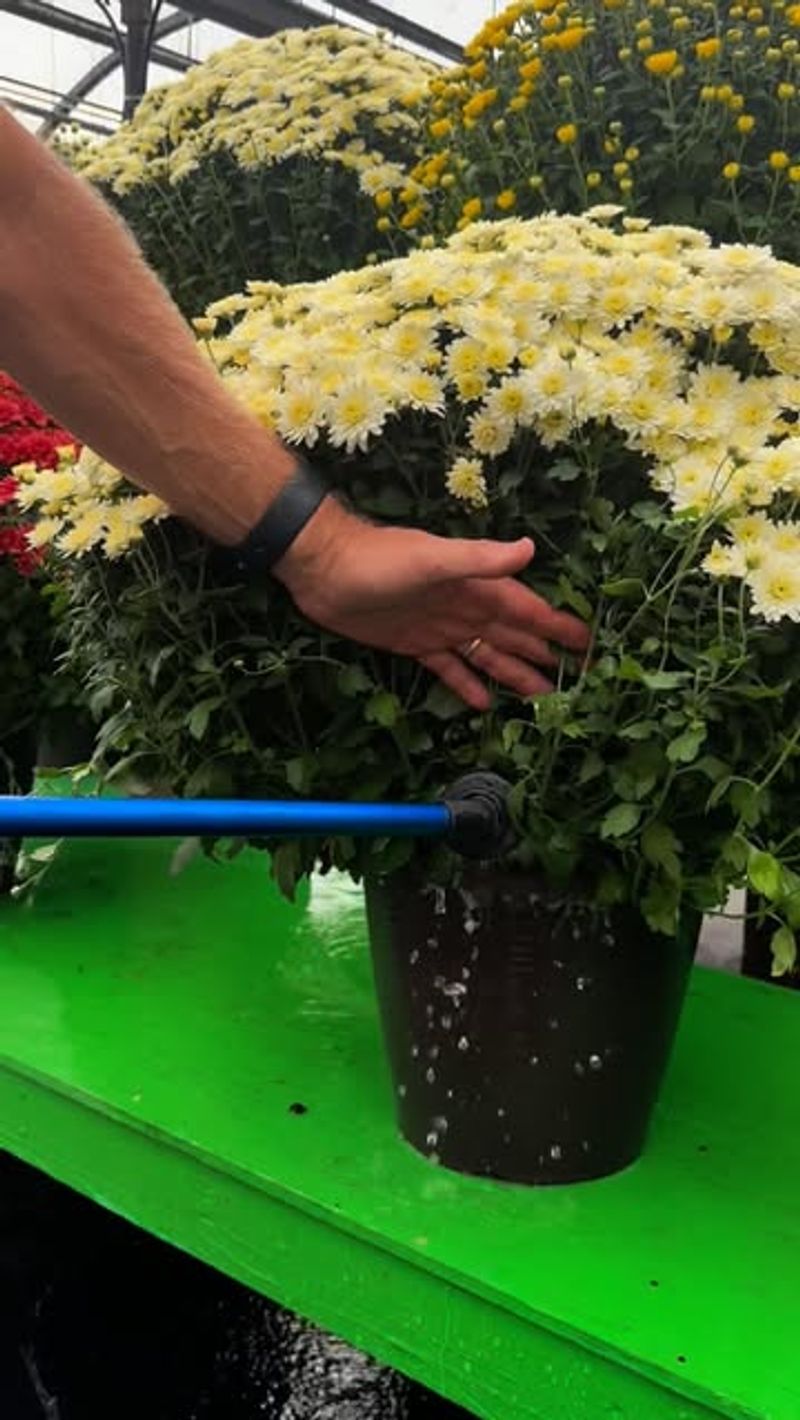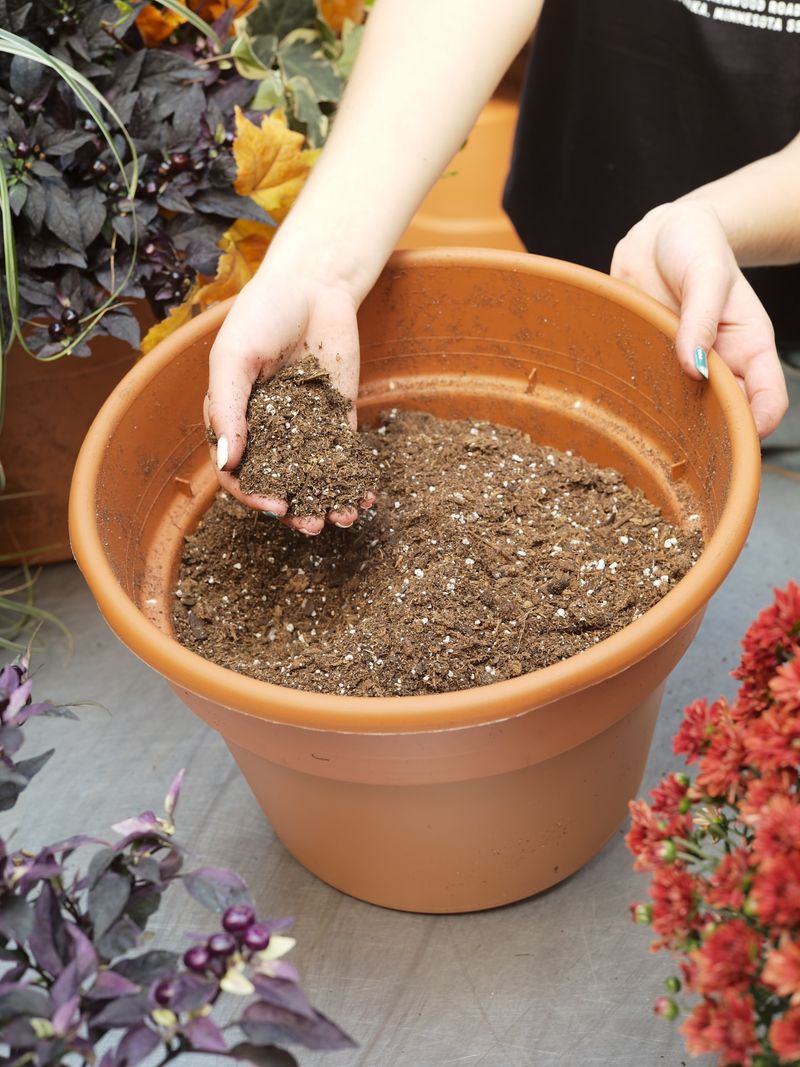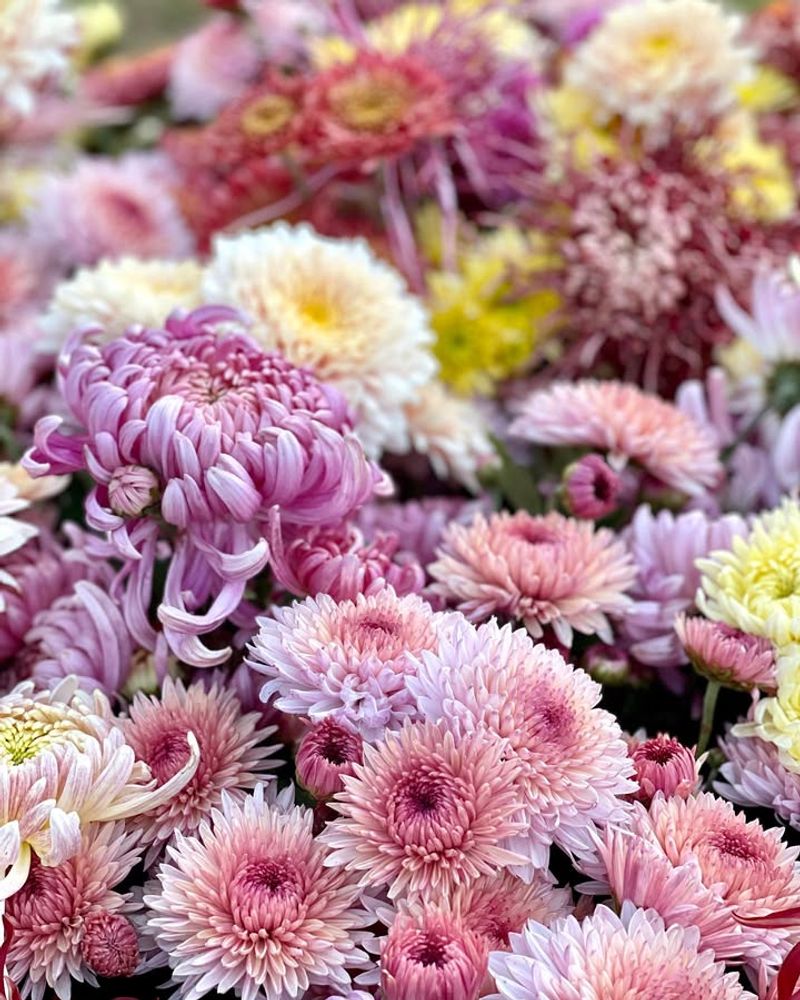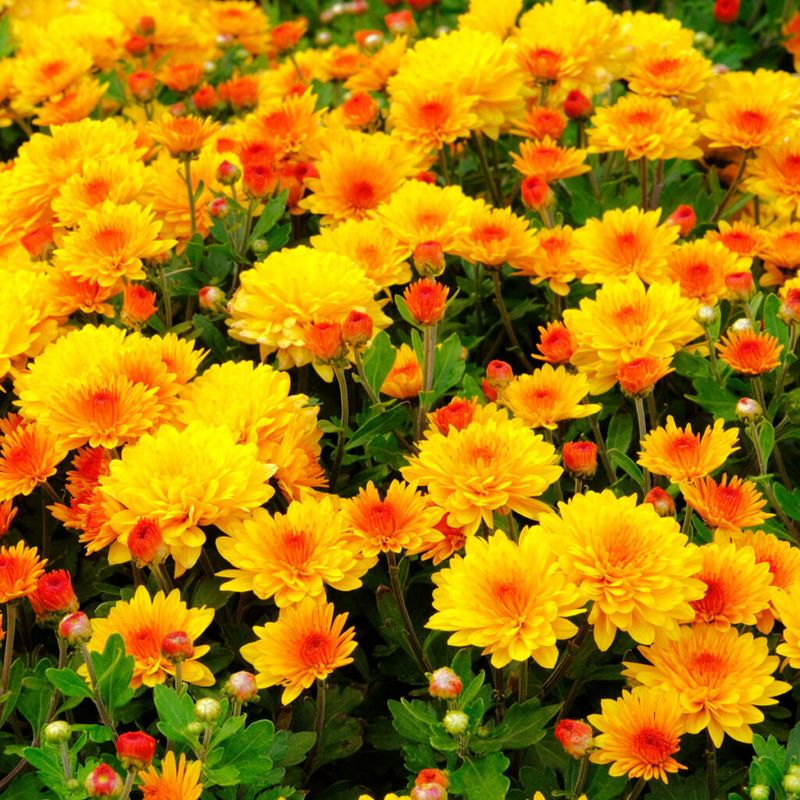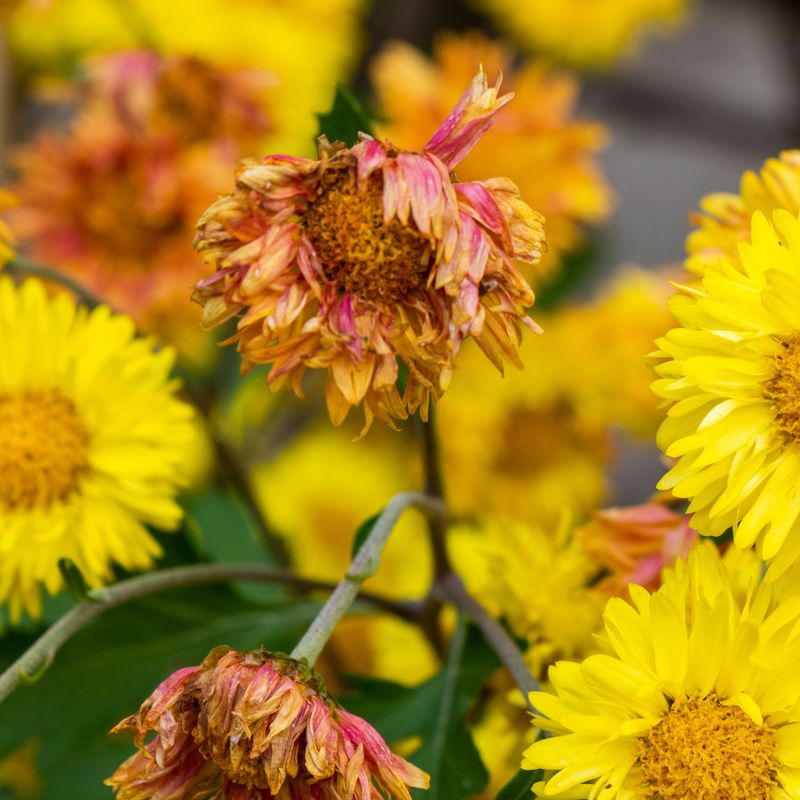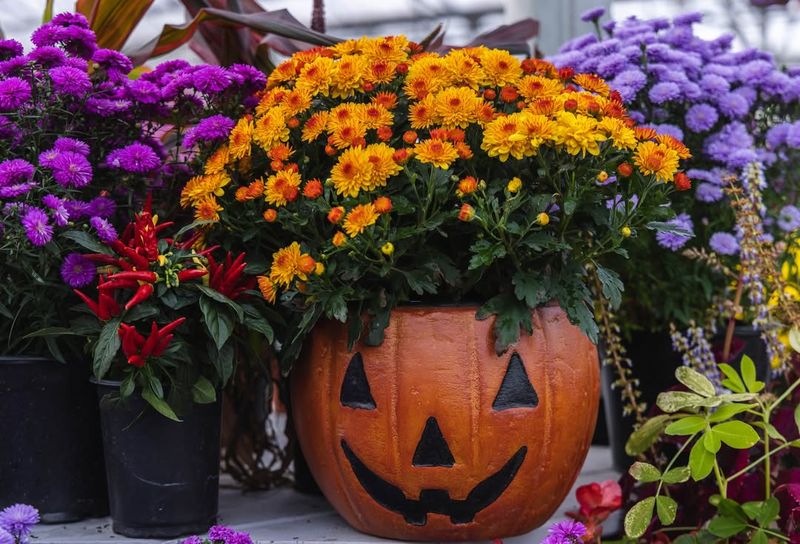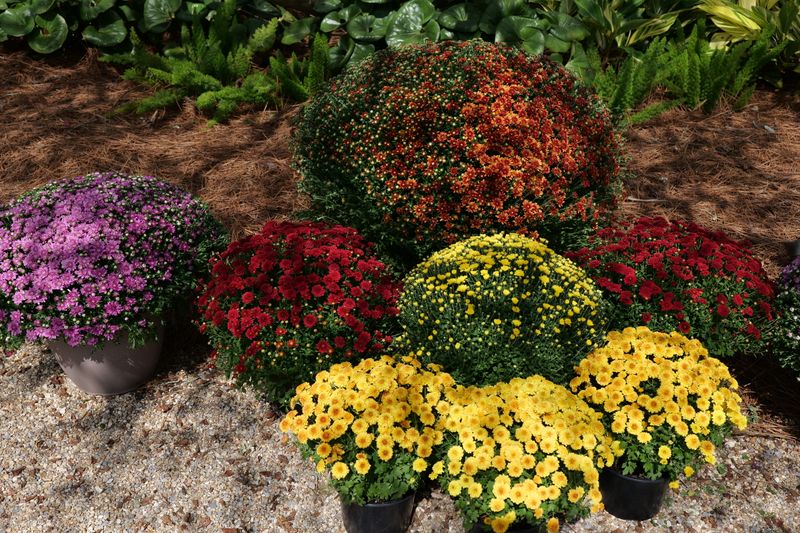Chrysanthemums bring gorgeous color to Colorado gardens just as summer flowers fade. However, our state’s early frosts, dry air, and temperature swings make keeping mums blooming throughout fall a real challenge.
With a few simple techniques, you can extend their flowering season well into the cooler months, even in our unique mountain climate.
1. Morning Watering Schedule For Drought-Resistant Blooms
Colorado’s dry climate demands strategic watering. I’ve found watering mums early in the morning allows roots to absorb moisture before the day heats up. This timing helps plants withstand our afternoon sun.
Keep soil consistently moist but never soggy. In my Denver garden, I check by inserting my finger about an inch into the soil – if it feels dry, it’s watering time. During hot spells, daily watering might be necessary.
Reduce frequency as temperatures cool, but never let plants completely dry out. This balanced approach strengthens stems and encourages continuous flowering without the stress that stops bloom production.
2. Soil Amendment Secrets For Mountain Gardens
Colorado’s native soil often lacks the organic matter mums crave. Adding compost when planting creates a nutrient-rich environment that fuels continuous blooming through our short fall season.
Last year, I mixed equal parts compost and garden soil when planting my Fort Collins garden. The difference was remarkable – those mums flowered weeks longer than previous seasons. Apply a layer of mulch around plants to retain moisture in our dry climate and insulate roots from temperature fluctuations.
Pine needles work wonderfully in our Colorado gardens, breaking down slowly while maintaining proper soil pH for mums.
3. Deadheading Magic For Continuous Color
Regular deadheading makes an enormous difference in bloom duration. Spent flowers signal the plant to produce seeds rather than new blooms, so removing them redirects energy back to flowering. After moving to Colorado Springs, I noticed how quickly our intense sunlight fades blossoms.
Now I check my mums every other day, snipping spent flowers just above the first set of healthy leaves. Use clean, sharp scissors rather than pinching with fingers.
This precision cutting minimizes damage and disease transmission between plants. My mums now produce successive waves of blooms lasting through November’s early frosts.
4. Fertilizing Strategy For Extended Blooming
Many gardeners make the mistake of heavy fertilizing in fall. For Colorado mums, switch to a low-nitrogen, high-phosphorus fertilizer when buds first appear. The phosphorus supports blooming without promoting frost-vulnerable new growth.
I apply liquid fertilizer at half-strength every two weeks until mid-October. This gentle approach provides steady nutrition without shocking plants as temperatures fluctuate in our mountain climate.
Stop fertilizing about a month before your area’s average first frost date. Here in Boulder County, that means early October. This timing allows plants to harden off properly while maintaining existing blooms through the season.
5. Frost Protection Techniques For Late-Season Flowers
Colorado’s unpredictable fall weather often brings early frosts followed by weeks of beautiful days. Keep breathable covers like bed sheets or frost cloth ready for unexpected cold snaps.
When frost warnings appear, I cover my mums before sunset and remove covers in the morning after temperatures rise above freezing. This simple step has saved countless blooms in my Longmont garden.
Potted mums offer flexibility during frost events. Move them to protected areas like porches or against south-facing walls that radiate heat overnight. This mobility advantage has helped my container mums outperform garden-planted ones in late fall.
6. Strategic Placement For Maximum Sun Exposure
Colorado’s intense sunlight requires thoughtful positioning. Plant mums where they receive morning sun but have afternoon shade, especially at higher elevations where UV exposure is stronger. Eastern exposures work beautifully in most Colorado regions.
My Grand Junction garden features mums along an east-facing fence that shields them from harsh afternoon rays while providing full morning light. Consider microclimates within your yard.
Areas near walls or large rocks that absorb heat during the day and release it at night extend blooming by creating slightly warmer zones. These thermal mass features have added weeks to my mums’ flowering season.
7. Choosing Hardy Varieties For Colorado’s Climate
Not all mums thrive equally in our challenging climate. Look for varieties labeled “garden mums” rather than “florist mums” for better cold tolerance. Korean mums and Mammoth mums have performed exceptionally well in my Colorado gardens.
Local nurseries typically stock varieties proven successful in regional conditions. I’ve found the ‘Sheffield Pink’ and ‘Clara Curtis’ varieties particularly resilient to our altitude and temperature swings. Fall-planted mums rarely survive Colorado winters.
For perennial performance, plant in spring to establish strong root systems before winter. This timing strategy has transformed my Durango garden from having short-lived fall color to reliable perennial displays year after year.


